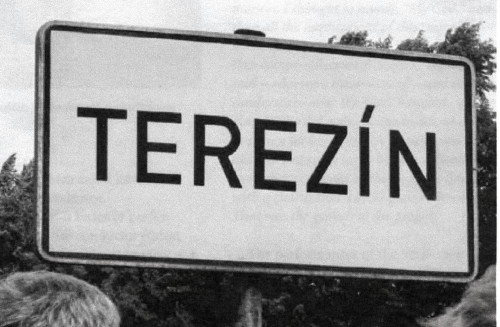
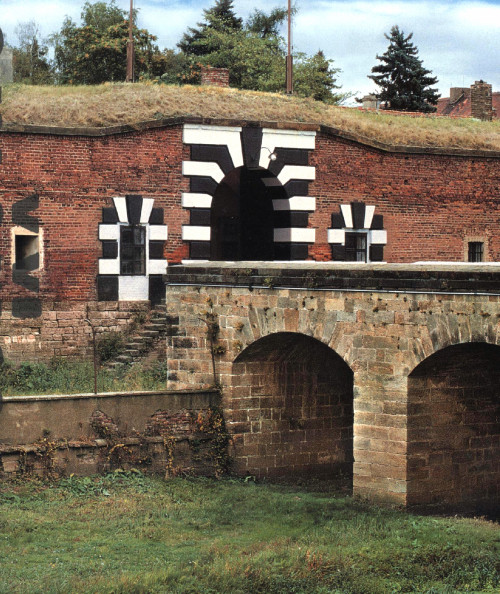
The Defiant Requiem
In late 1944 a chorus of Jewish prisoners in the Terezin concentration camp near Prague performed the Verdi Requiem before a selected audience of SS officers and representatives of the International Red Cross. It was a transparent attempt by the Nazis to showcase their humane treatment of the prisoners to the outside world. Shortly after the concerts, most of the performers were transported to the gas chambers in Auschwitz.
In May of 2009 Valerie and I were invited to sing the Verdi Requiem in the Terezin concentration camp, where the Defiant Requiem was first performed sixty-five years earlier. It was an overwhelming musical and emotional experience for both of us.


Terezin – Nazi Concentration Camp Entrance to the Terezin Fortress
In the fall of 2008, Valerie and I received letters from the Berkshire Chorale organization advising us of an “once-in-a-lifetime” opportunity to perform the Verdi Requiem the following spring with 200 other singers at a former concentration camp near Prague. It was an opportunity that we couldn’t pass up. Prague is one of our favorite cities; the Verdi Requiem is one of our all-time favorite choral works; and the occasion offered us a chance to honor the memory of the courageous singers, who had performed the Verdi Requiem in the concentration camp during World War II, before being sent to their deaths as victims of the holocaust.
We completed our applications and mailed them back the same day. We hoped that our 16 years of experience with the Minnesota Chorale, our six concert performances of the Verdi with the Chorale years and our two previous choral experiences with the Berkshire Choral Festival, including concerts in Santa Fe and in the Canterbury Cathedral, would support our application.
We were overjoyed when our acceptance letters arrived a month later. We dug out our Requiem scores from our music library and began to re-familiarize ourselves this most thrilling of all choral works.
* * *
The following spring we joined 180 other singers in Prague to prepare for the concert at the Terezin concentration camp. Terezin, or Theresienstadt as it is known in German, was built at the end of the 18th century as a military fortress by Emperor Joseph II of Austria and named in honor of his mother, Empress Maria Theresa. Built at the confluence of the Elbe and Eger rivers, the site consisted of two fortresses surrounded by moats and massive ramparts. It proved to be an ideal location for a Nazi concentration camp over a century later.
The larger fortress was used as a detention camp into which Jews from Czechoslovakia and eventually from a much wider area, were collected and held, until the extermination camps further east were ready to carry out their final solution. The 6,000 original residents of the pre-war village of Terezin were relocated and as many as 60,000 Jews were crammed into the buildings, filling the rooms, attics and cellars to overflowing. The smaller fortress nearby was converted into a Gestapo prison, where special prisoners were tortured and killed.
In less than four years, more than 140,000 prisoners were brought to Terezin. As more Jews continued to arrive at the ghetto, trainloads of prisoners began to be transported to the East, most of them sent to the notorious Auschwitz extermination camp. About 88,000 individuals were deported to Auschwitz and other death camps. In the ultimate act of sadistic cruelty, the Germans forced the Jewish leaders to determine which Jews would fill the monthly deportation quotas.
Over 33,000 prisoners died in the ghetto itself, as a result of the appalling living conditions arising from the extreme crowding, hunger and the atrocious accommodations and hygienic conditions. At war’s end there were only 17,000 survivors of the original 140,000 inmates. Tragically, only 136 of the 15,000 children brought to Terezin survived the war.
Terezin was liberated on May 9th, 1945, by the Soviet Army. In May of 1947, the government of the Czech Republic created the Terezin Memorial, with the aim of preserving the site as it was during the period of the Nazi occupation.
* * *
It was there in Terezin that one of the least-known and most inspiring events in the history of choral music took place. In the years 1943-44 a chorus of Jewish concentration camp prisoners engaged in 16 performances of the Verdi Requiem under the eyes of their Nazi captors. A brilliant, young conductor, Rafael Schächter, using a legless piano and a single copy of the musical score, gathered over 150 Jewish prisoners in a cold basement beneath one of the camp barracks to establish and rehearse a chorus, many of whose members were experienced musicians from the city of Prague. From his single score, he helped his singers memorize the Latin lyrics, learn the translation and practice their individual parts. Despite hunger and exhaustion from their daily labors, the singers found the rehearsals to be a momentary escape from the harsh realities of camp life and their uncertain fate.
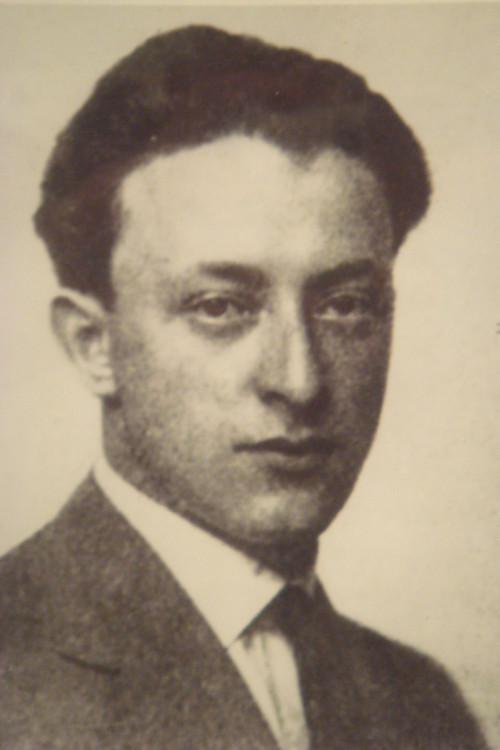
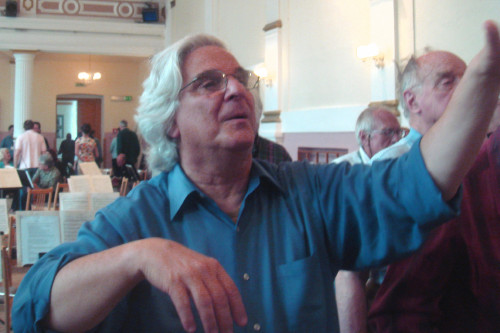
Rafael Schächter, Requiem Conductor (1944) Murry Sidlin, Requiem Conductor ( 2009)
Though his choice of a Latin-based text from the Catholic liturgy was questioned by the Jewish Council of Elders, Schächter was convinced that the music gave them a chance to express, through their performance, words that they could never say to their captors: that the wrath of God, delivered in the terrifying fashion in the Dies Irae movement, awaited them. He referred to the work as the “Defiant Requiem”.
As the Nazis continued to transport prisoners from Terezin to the death camps in Poland, Schächter had to continually audition and train new singers to take their places. He refused to perform for others until the music was perfect. Over the following months, even as the chorus continued to be decimated by deportations, the requiem was performed 16 times.
The final performance, with only 60 choir members remaining, was staged by the Nazis for visiting members of the International Red Cross and Nazi leaders, in a carefully arranged showcase about the “good life” in the camp. The ranking Nazi present at the performance was Adolph Eichmann, the infamous architect of the final solution. Sadly, the Red Cross saw only what the Nazis wanted them to see and did not see through the ruse. Following the performance, Eichmann laughed and was heard to say, “Those crazy Jews; they are singing their own Requiem.”
A few weeks after this final performance, Schächter, the soloists and many of the singers were loaded into a railroad cattle car along with a thousand other prisoners from Terezin and were transported to Auschwitz, where they were sent to the gas chambers. Eichmann eluded capture until 1960 when he was eventually captured, tried and hanged for his crimes. Evidence from Terezin figured prominently in the trial. .
* * *
We began rehearsals in Prague a full week before our performance at Terezin. Our chorus, called the Berkshire Chorale Festival chorus, was made up of 180 singers from 26 states and six foreign countries. Considering that auditions were not required and that the singers were selected based solely on their musical resumes, most of the singers were excellent musicians and were very well prepared. All had received the musical scores, along with a practice tape, in the mail several months earlier and were expected to arrive in Prague with the music learned.
We had two, three hour rehearsals daily for the first five days under the direction of a demanding rehearsal conductor. It was hard work, but rewarding, as the music took shape. In truth, it was wonderful fun. We were spending the week in one of the most beautiful cities in Europe. It was springtime. We sang our hearts out all day long; and it was a special opportunity for Valerie and me, as one of only a few married couples in the chorus, to share this wonderful music experience together. We had sung the Verdi Requiem on three earlier occasions with the Minnesota Chorale, so the music was very familiar and came back easily for us.
By mid-week I found myself occasionally choking up with emotion both from the sheer beauty of the music and from the context in which we were performing it. Anticipating the problem, our conductor reminded us of our obligation to our audience and to the memories of the Terezin singers. He advised us to maintain a professional detachment and not allow ourselves to be overcome by emotions. It proved a lot easier to say than to do.
Despite the busy rehearsal schedule, there was ample free time to explore Prague and to take advantage of its rich musical heritage. There were daily musical offerings, afternoon and evening, for every taste. It is said that every second Czech is a musician. In our free evenings, Val and I took in a Mozart string ensemble, an opera performance of Eugene Onegin and a Strauss operetta at the Prague Opera House, which is among the most beautiful opera houses in Europe
Having seen much of Prague in our earlier visit in 2005, we chose to use our one free afternoon to venture out of the city to explore the Karlstein castle, built in 1348 by Charles IV, King of the Holy Roman Empire. It gave us a great chance as well to drive through the beautiful Czech countryside with its tidy villages, tile-roofed houses, flowering fruit trees and expansive fields of vibrant yellow rape seed. Our final excursions outside of Prague were to Terezin, about an hour’s distance from the city on the weekend for the dress rehearsal on Saturday and the concert on Sunday.
* * *
On the third Sunday of May each year, the Czechs hold a memorial service at Terezin to commemorate the victims of the Nazi concentration camp. The service includes speeches, music and wreath laying ceremonies at the large national cemetery outside of the camp. The Verdi Requiem was performed in the afternoon following the ceremonies.
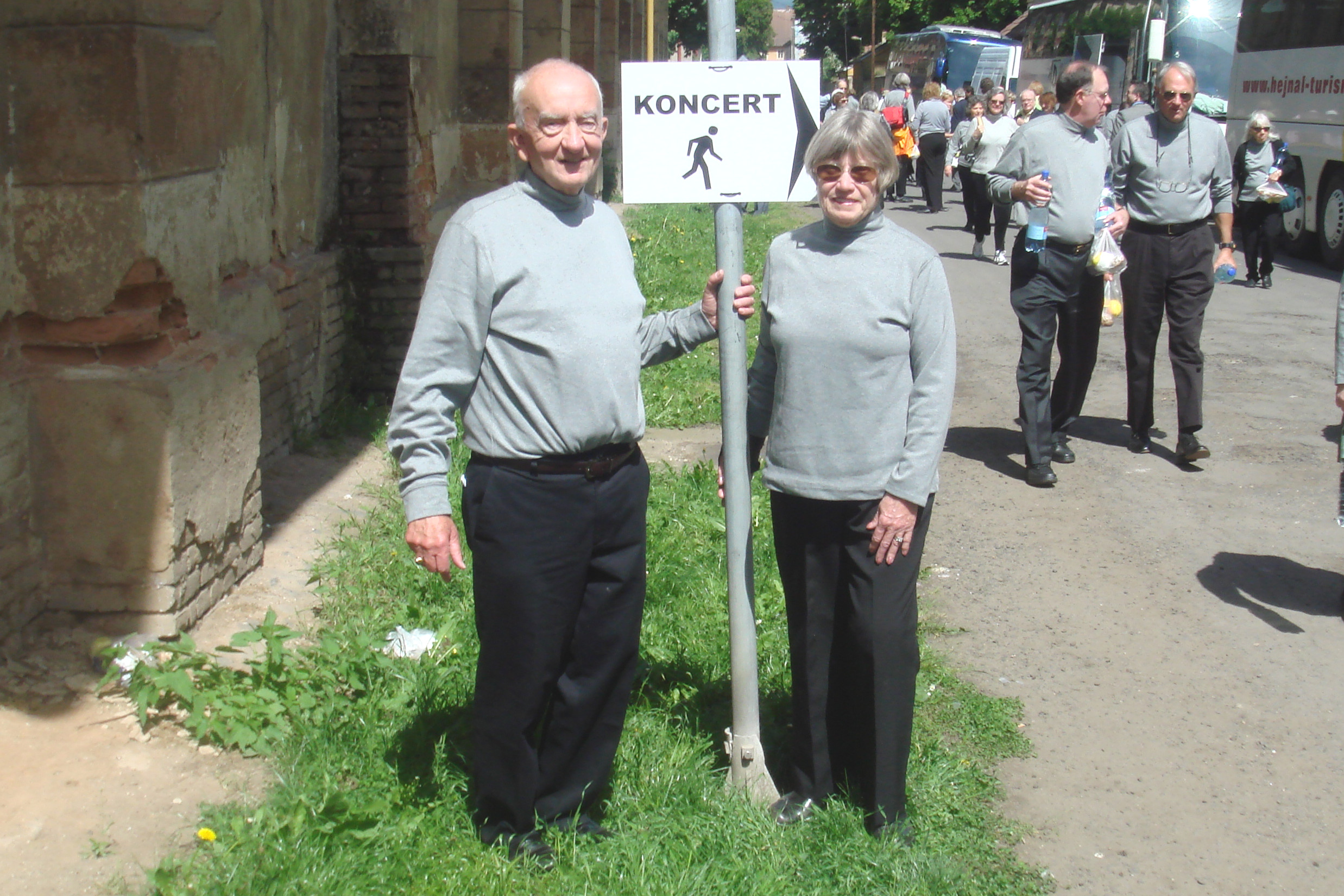
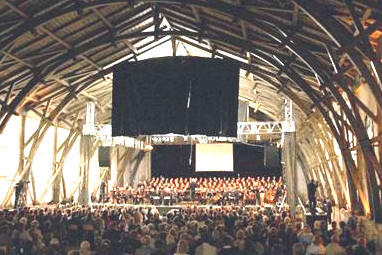
“Defiant Requiem” Singers, Terezin (2009) Riding Academy, Built in 1861, Used for Requiem Performance
Our conductor, Murry Sidlin, has created a “concert-drama”, a staged presentation which he called “The Defiant Requiem – Verdi at Terezin”. It is a complete performance of the Verdi requiem, interspersed with actors, narrators, filmed interviews with survivors, and old film clips taken at the camp during the war. The films were projected on a large screen behind the singers. Many of the films were familiar ones and, as horrific as they were, the most unsettling segment to me was a Nazi propaganda film made to show the world how well the Jews lived in Terezin under the “benevolent” protection of the Third Reich. The cynical film featured children at play, young girls doing gymnastics, women gardening and old men playing chess in the sunshine, while forced out of sight just beyond the camera lens, the inmates were suffering and dying under the most cruel and inhumane conditions.
Sidlin created and performed the first “Defiant Requiem” in Portland in 2003. He has performed it five times since then. It has become his personal mission to make sure that the world does not forget the story of Rafael Schächter and the singers of Terezin.
The chorus and orchestra were already on stage when the audience arrived in the 150 year old riding academy building, where the concert was held. The singers were dressed in black pants and skirts and grey shirts for the performance. The orchestra, conductor and soloists were dressed in black as well. We were told to wear no jewelry that might distract the audience. There were none of the usual flamboyant entrances by the conductor and soloists. The audience settled in. Terezin survivors and their descendants were seated in first few rows, including one 89 year old survivor, Edgar Krasa, who had flown in from the U.S. to attend the ceremonies. We had met the charming, old gentleman before the concert and learned that he had spent four years at Terezin, working as a cook and had sung in all 16 performances of the Verdi Requiem under Schächter’s baton.
The lights were dimmed and the choir began quietly with the first pianissimo entrance - Requiem, Requiem eternam. (Rest in peace). The whisper grew into the Kyrie, as the intensity increased.. Moments later four crashing drum beats signaled the start of the Dies Ire movement, as the chorus planted their feet, raised their music scores and filled their lungs for the thunderous roar - Dies ire, dies illa (Day of wrath, day of judgment) that filled the hall and electrified the singers. It was a moment unlike anything I’d experienced in all of my years of choral singing. The anger of what had transpired in Terezin took over and became an inseparable part of the music.
Our director’s earlier admonitions not to allow our emotions get in the way of our performance proved to be difficult; a growing lump in my throat and tears in my eyes making it harder to sing. Stealing a glance at Valerie, down in the front row of altos, with her voice raised and her eyes glistening didn’t make it any easier either. The magnificent requiem continued for well over one hour before we reached the final movement. It was both physically and emotionally draining, like running a marathon with the closing fugue as the final sprint to the finish line. The requiem ended quietly with one final supplication, “Libera me, libera me” (Free me)
As the last note faded, the sound of a train whistle echoed in the distance, signaling the call to the waiting train. A lone clarinetist began to play a mournful tune, Osay Shalom, a Jewish prayer for the dead, as the chorus filed slowly out of the hall, humming the tune. Eyes downcast, we exited the hall and turned toward the railroad siding, where the boxcars had waited 65 years earlier to transport the prisoners to Auschwitz and the gas chambers. Only the clarinetist remained on the stage playing his haunting tune under the last choir member disappeared. There was no applause. The audience left in silence.
It was a moment that we will never ever forget. Certainly, any time that we hear the Verdi Requiem in the future, our thoughts will turn to Rafael Schächter and the heroic singers of Terezin. Theirs is a story that should never be forgotten. Grant them eternal rest. Dona eis requiem. Amen.